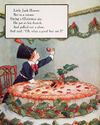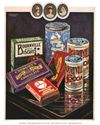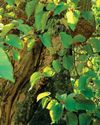
THE lupin is so cosily familiar as a feature of the early-summer flower border that it comes as a surprise to discover its dramatic history. We have become used to its pretty range of bicoloured flowers, easily grown from seed, and never think to express gratitude to the single-minded devotion that made such things possible. Like so many lovely things that we have come to take for granted, there is more to this than meets the eye.
We must first lift our hats to David Douglas, despatched to the west coast of North America in the 1820s. He was a hugely successful plant hunter who brought us many of our most familiar garden plants before his recklessness brought about his early death. One of his enduring legacies is Lupinus polyphyllus, a widespread species of shingly riversides from California to Alaska. Its chirpy blue and white flowers soon established themselves in Britain as garden favourites and the plant’s adaptable nature meant that, before long, the big seeds found themselves well suited to life on the other side of the wall.
This unplanned, but perhaps not unexpected, escape to the wild was such a ‘success’ (I tread carefully here) that, within 50 years, William Robinson was able to use the lupin as a model of his dubious intention to populate the countryside with foreign herbaceous perennials. When he wrote in The Wild Garden of ‘the perennial Lupine dyeing an islet with its purple in a Scotch river’, he revealed the plant seeking out the kind of habitat it had left behind thousands of miles away. It has done this around the world ever since, becoming a rather too familiar sight along the braided rivers of New Zealand, for instance.
Diese Geschichte stammt aus der May 18, 2022-Ausgabe von Country Life UK.
Starten Sie Ihre 7-tägige kostenlose Testversion von Magzter GOLD, um auf Tausende kuratierte Premium-Storys sowie über 8.000 Zeitschriften und Zeitungen zuzugreifen.
Bereits Abonnent ? Anmelden
Diese Geschichte stammt aus der May 18, 2022-Ausgabe von Country Life UK.
Starten Sie Ihre 7-tägige kostenlose Testversion von Magzter GOLD, um auf Tausende kuratierte Premium-Storys sowie über 8.000 Zeitschriften und Zeitungen zuzugreifen.
Bereits Abonnent? Anmelden

Save our family farms
IT Tremains to be seen whether the Government will listen to the more than 20,000 farming people who thronged Whitehall in central London on November 19 to protest against changes to inheritance tax that could destroy countless family farms, but the impact of the good-hearted, sombre crowds was immediate and positive.

A very good dog
THE Spanish Pointer (1766–68) by Stubbs, a landmark painting in that it is the artist’s first depiction of a dog, has only been exhibited once in the 250 years since it was painted.

The great astral sneeze
Aurora Borealis, linked to celestial reindeer, firefoxes and assassinations, is one of Nature's most mesmerising, if fickle displays and has made headlines this year. Harry Pearson finds out why

'What a good boy am I'
We think of them as the stuff of childhood, but nursery rhymes such as Little Jack Horner tell tales of decidedly adult carryings-on, discovers Ian Morton

Forever a chorister
The music-and way of living-of the cabaret performer Kit Hesketh-Harvey was rooted in his upbringing as a cathedral chorister, as his sister, Sarah Sands, discovered after his death

Best of British
In this collection of short (5,000-6,000-word) pen portraits, writes the author, 'I wanted to present a number of \"Great British Commanders\" as individuals; not because I am a devotee of the \"great man, or woman, school of history\", but simply because the task is interesting.' It is, and so are Michael Clarke's choices.

Old habits die hard
Once an antique dealer, always an antique dealer, even well into retirement age, as a crop of interesting sales past and future proves

It takes the biscuit
Biscuit tins, with their whimsical shapes and delightful motifs, spark nostalgic memories of grandmother's sweet tea, but they are a remarkably recent invention. Matthew Dennison pays tribute to the ingenious Victorians who devised them

It's always darkest before the dawn
After witnessing a particularly lacklustre and insipid dawn on a leaden November day, John Lewis-Stempel takes solace in the fleeting appearance of a rare black fox and a kestrel in hot pursuit of a pipistrelle bat

Tarrying in the mulberry shade
On a visit to the Gainsborough Museum in Sudbury, Suffolk, in August, I lost my husband for half an hour and began to get nervous. Fortunately, an attendant had spotted him vanishing under the cloak of the old mulberry tree in the garden.